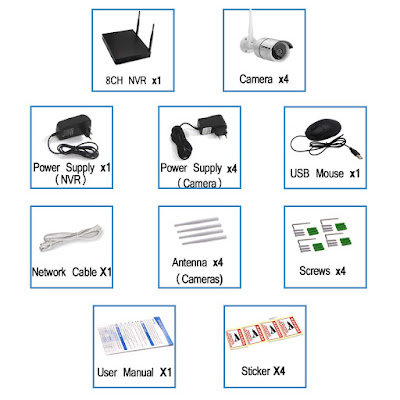CCTV full form-appliance
CCTV :- Closed-circuit television, also
known as video surveillance, uses video cameras to transmit signals to a
specific location on a limited number of monitors. It differs from broadcast
television in that the signal is not transmitted publicly, though it may employ
point-to-point, point-to-multi point or fake wired or wireless links. Although
almost all video cameras fit this definition, the term is often used to monitor
areas that require surveillance in banks, stores and other areas where security
is required, though video telephony is rarely called 'CCTV', with the exception
of distance. Use of video in education, where it is an important tool.
Public surveillance using CCTV is
common in many parts of the world In recent years, the use of body-worn video
cameras has been introduced as a new form of surveillance, often used by law
enforcement, where police officers have cameras on the chest or on the head.
Video surveillance has also generated significant debate in the public about
balancing its privacy rights with the public.
In industrial plants, CCTV
equipment can be used to monitor parts of a process from a central control
room, for example when the environment is not suitable for humans. CCTV systems
can operate seamlessly or simply as needed to monitor specific events. The more
advanced version of CCTV using digital video recorders provides recordings for
many years, possibly with different quality and performance options and
additional features. Recently, the decentralized IP camera is probably equipped
with a megapixel sensor, supports recording directly to a network-attached
storage device, or an internal flash for full stand-alone operation.
As of 2016, there are approximately
350 million surveillance cameras worldwide, with approximately 65% of these
cameras installed in Asia. The growth of CCTV has been slow in recent years.
The deployment of this technology has resulted in a significant increase in
state surveillance, a substantial increase in improved social monitoring and
control methods, and a simplification of crime prevention systems around the
world.
History :
An early mechanical CCTV system was
developed in June 1927 by Russian physicist Leon Thermin. The system,
originally requested by the Soviet Union for Labor and Defense, consists of a
manually operated scanning-transmitting camera and wireless shortwave
transmitter and receiver with one hundred lines of resolution. The CCTV system
of Thermine, led by Clement Vorosilov, was shown to Joseph Stalin, Semyon
Budoyeni and Sergo Ordzhonikidze, and was subsequently installed in the Moscow
Kremlin's courtyard to monitor incoming visitors as a means of state
surveillance.
The first commercial closed circuit
television system in the United States became available in 1949 under the name
Vericon. It is rarely known without advertising that Vericon does not require
any government approval.
Technology :
The first recording video
surveillance systems involved constant monitoring because there was no way to
record and store information. Reel to reel media development enables
surveillance footage recording enabled Magnetic tapes need to be manually
modified in this system, which was a time-consuming, expensive and incredible
process, the operator manually threaded the tape from the tape reel through the recorder onto the empty take-up reel. Because of these drawbacks, video
surveillance has not expanded significantly. VCR technology became available in
the 1970 making it easy to
record and erase information, and video surveillance use became more common.
Digital multiplexing was created in the nineties, allowing
multiple cameras to record simultaneously, as well as timelines and just motion
recording. This saves time and money, which then increases the use of CCTV.
Application :
Closed-circuit television was used
as a form of pay-per-view theater television for sports such as professional
boxing and professional wrestling, and from 1964 through 1970, the Indianapolis
500 automobile race. Boxing telecasts were broadcast live to a select number of
venues, mostly theaters, where viewers paid for tickets to watch the fight
live. The first fight with a closed-circuit telecast was Joe Louis vs. Joe
Walcott in 1948. Closed-circuit telecasts peaked in popularity with Muhammad
Ali in the 1960 and 1970, and the "Thrilla in Manila" drawing
100 million CCTV viewers worldwide in 1975. In 1985, the Wrestle Mania I
professional wrestling show was seen by over one million viewers with this
scheme. As late as 1996, the Julio César Chávez vs. Oscar De La Hoya boxing
fight had 750,000 viewers. Closed-circuit television was gradually replaced by
pay-per-view home cable television in the 1980 and 1990. Another early
appearance was in 1973 in Times Square in New York City. The NYPD installed it
in order to deter crime that was occurring in the area; however, crime rates
did not appear to drop much due to the cameras. It was seen as a cheaper way to
deter crime compared to increasing the size of the police departments.
Tags :
CCTV full form
full form of CCTVCCTV camera full form
full form of CCTV camera
CCTV camera full form in English
























No comments: